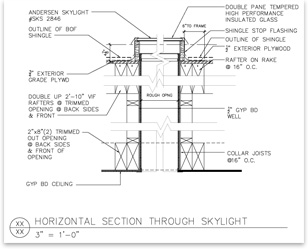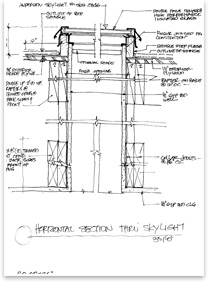
| Best Practices Offshore Outsourcing for Small Projects by Cliff S. Moser, AIA, principal, RTKL Associates, Los Angeles Summary: With the recent demand for labor, as noted in Work-on-the-Boards, and offshore outsourcing becoming a new business model, AIArchitect turned to a large-firm principal who needed help on his own home remodeling. His experience with an offshore outsourcing provider subsequently led him to use the service for his firm’s work as well.
In the old days, I would have started with the Yellow Pages. Now I Google. I found CADFORCE, a firm that works all over the country, but their office is just down the street, which was convenient. If I dropped off my markups during the day, they’d get someone to work on it that night, and I’d have something new in the morning. The cost was reasonable, and because they have inherent architectural capabilities, I was able to communicate with them with minimal drawings. Transitioning to larger projects I also use the firm for as-builts from the contractor’s drawings, which they can turn around in about a week, which, with our workload, I couldn't get in-house.
How outsourcing works as we develop our BIM capabilities is another concern, since that’s a new direction for the firm. We might see if CADFORCE can help us convert our standard detail sheets into Revit. If they can get up the learning curve on BIM, they can help us a lot with that kind of conversion. CADFORCE Principal Jefferson Schierbeek, AIA, provides additional insight into how his outsourcing service works. “We hire architectural know-how in this country so we have Americans speaking with Americans. Then we directly employ drafting teams in India. We provide ‘thoughtful drafting,’” says Schierbeek. “One thing we're very aware of is the fine line between supporting architects and practicing architecture, what I call the design line. We are careful not to cross that line.” Schierbeek notes that the firms CADFORCE works with range from single-person shops to the largest in the U.S. Two critical criteria, though, are technological savvy and willingness to use an alternative method. They assign specific personnel to clients and pair their expertise with that of their clients so their drafting matches the client's standards. “I think a lot of architects may wonder why I would want to do this, having practiced architecture for 24 years. The answer is in our tag line: ‘We draft while you dream,’” he concludes. “I like being involved in a company that makes it easier, more profitable, and perhaps more enjoyable to practice architecture.” |
||
Copyright 2007 The American Institute of Architects. All rights reserved. Home Page |
||
home
news headlines
practice
business
design
RECENt related
› AIA International Affairs Update, 11/22/06
› AIA International Affairs Update, 05/03/06
› Exporting Architectural Services for U.S. Firms


